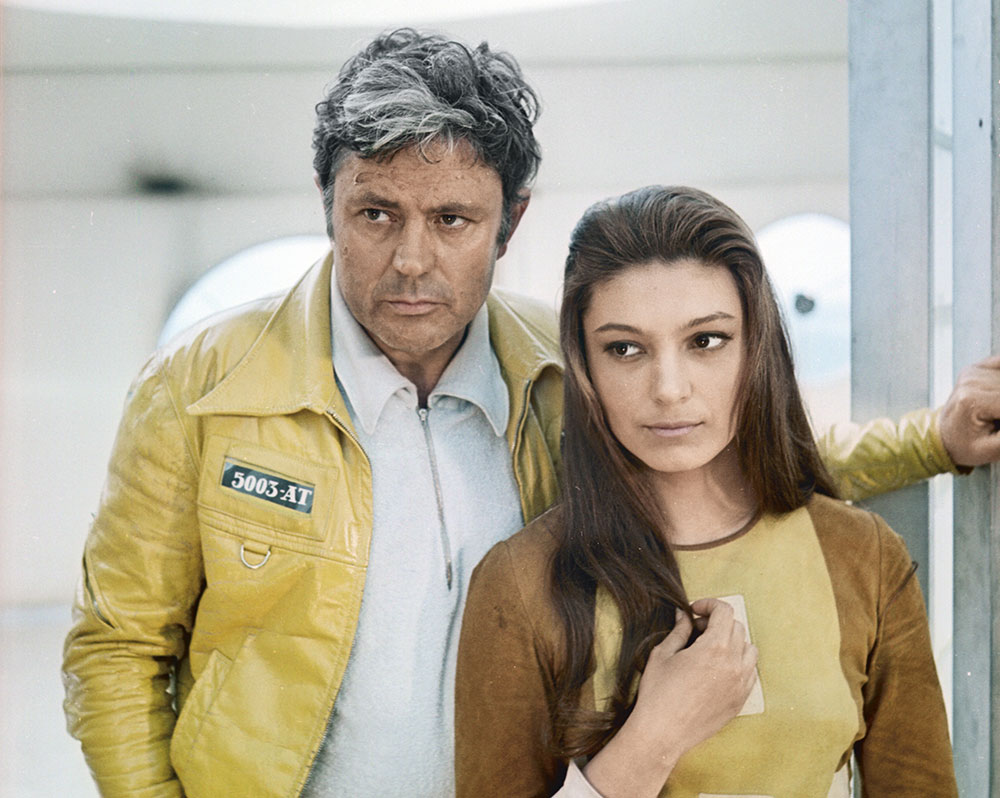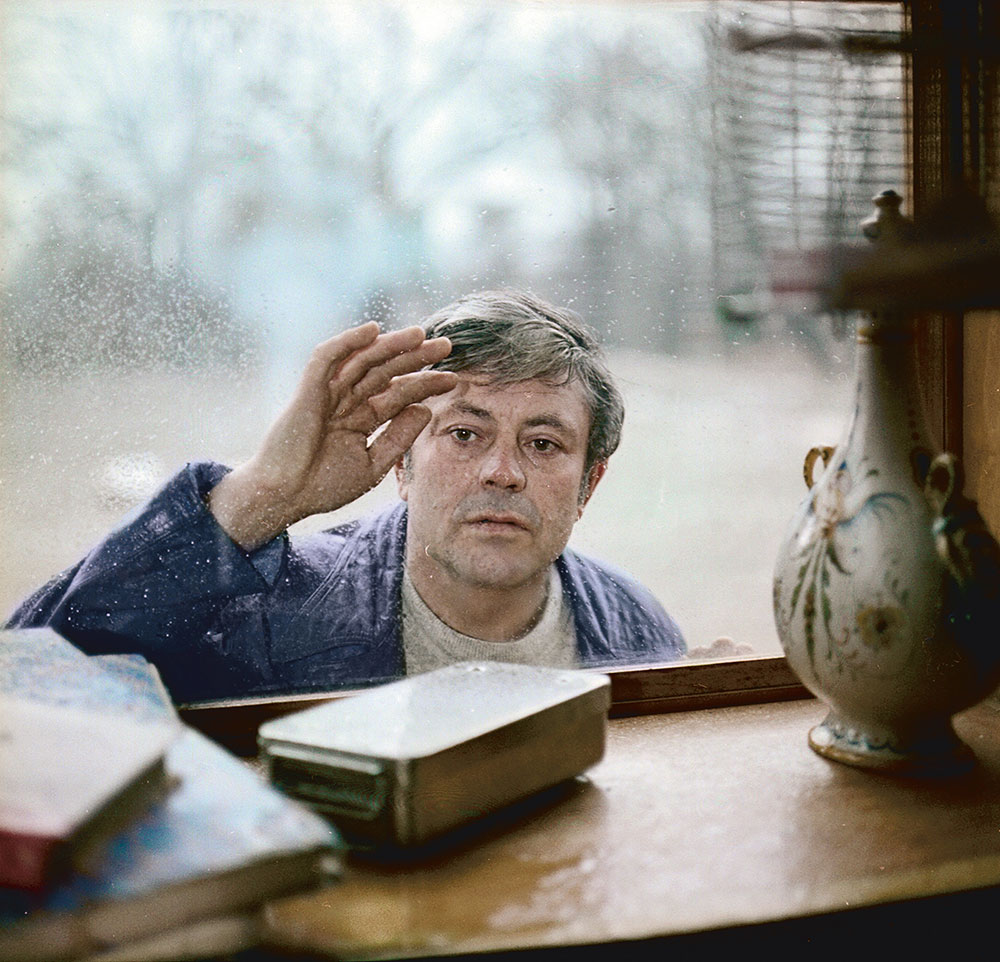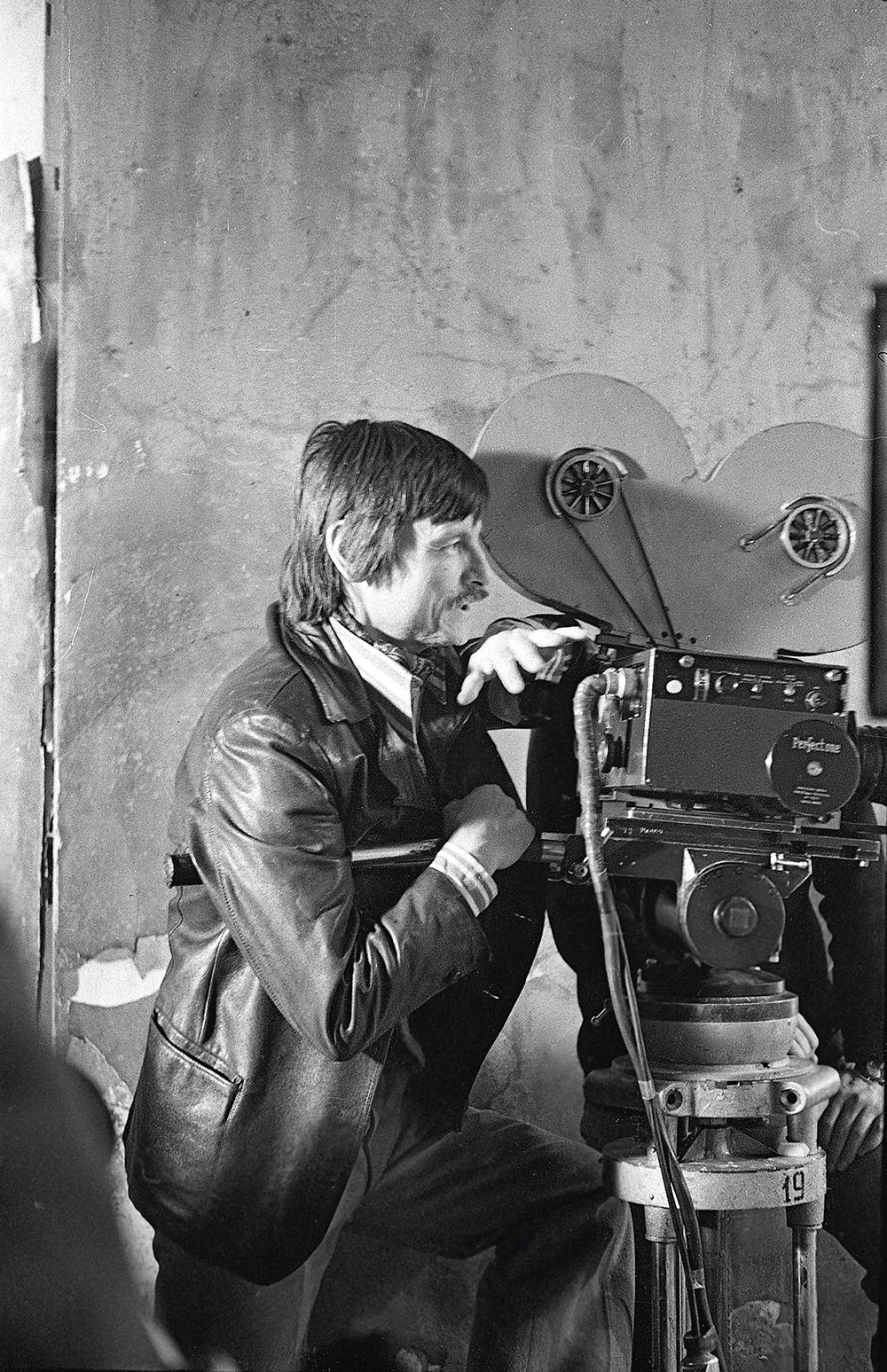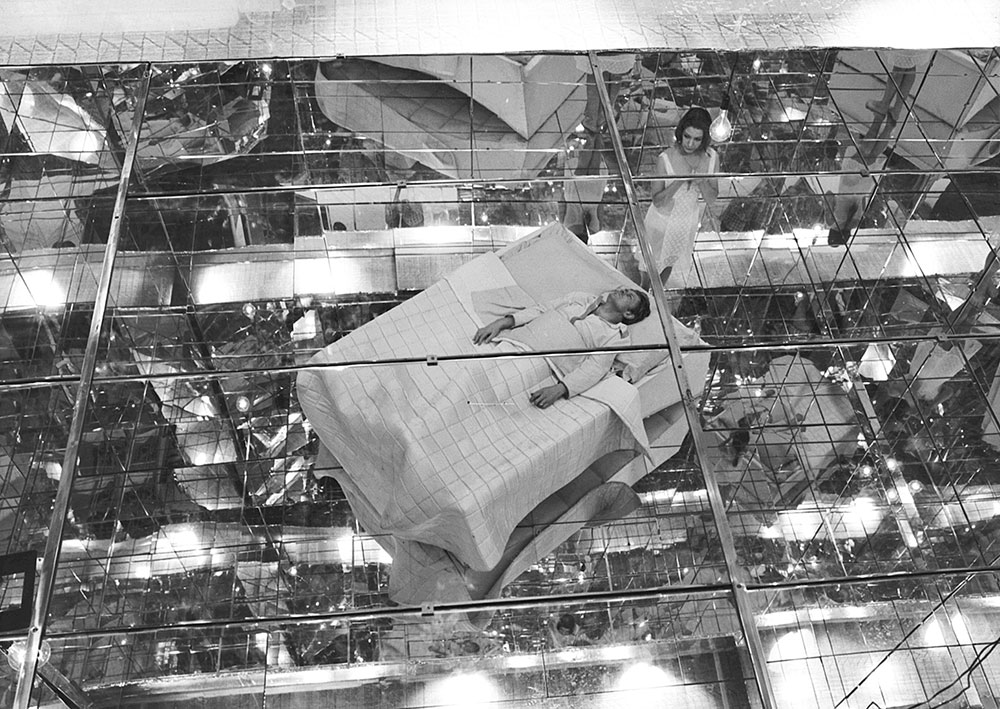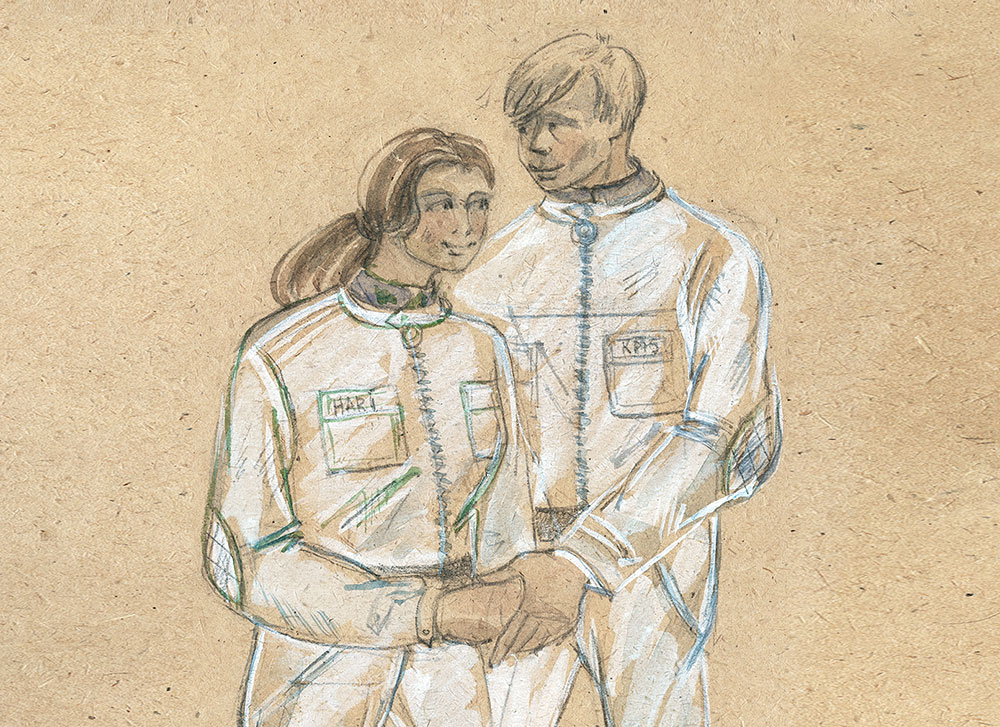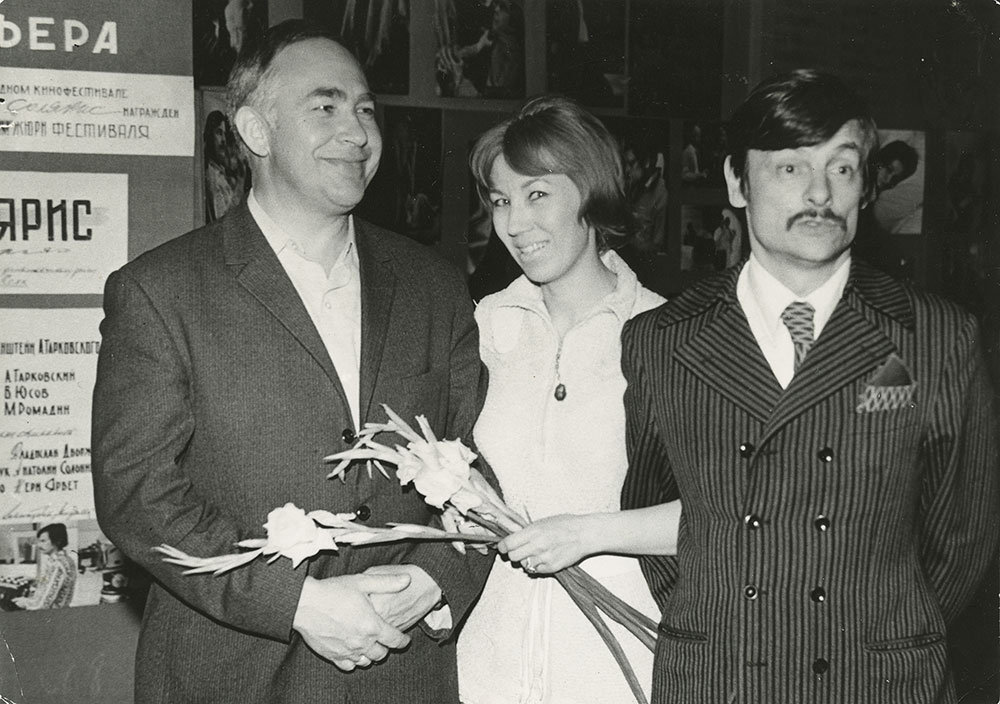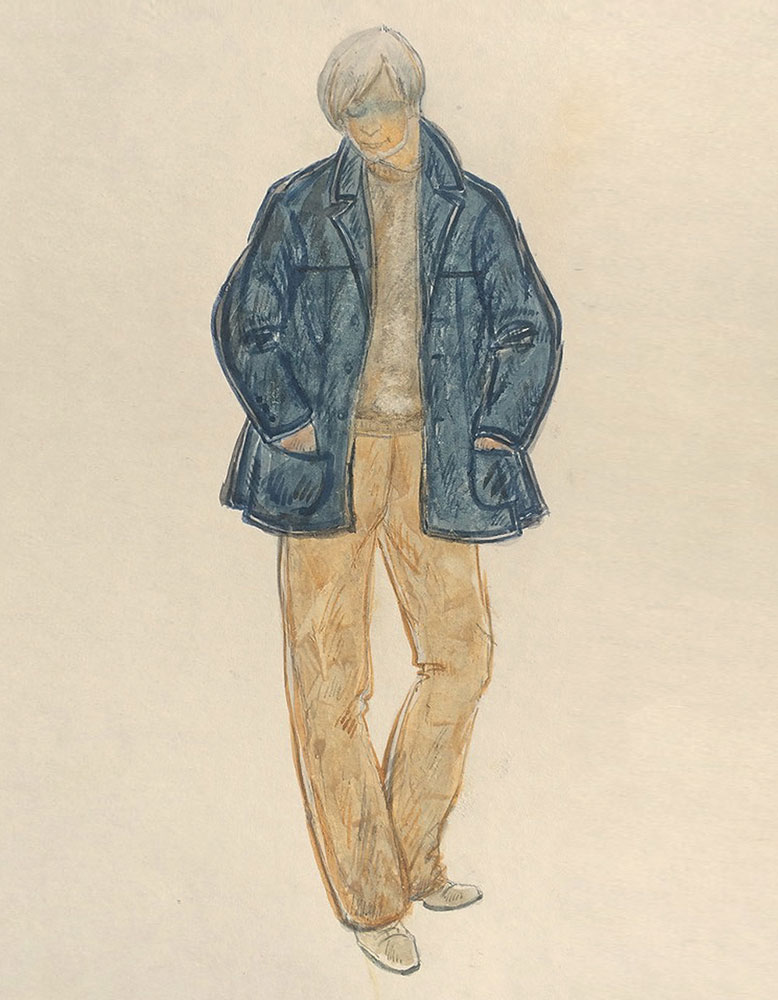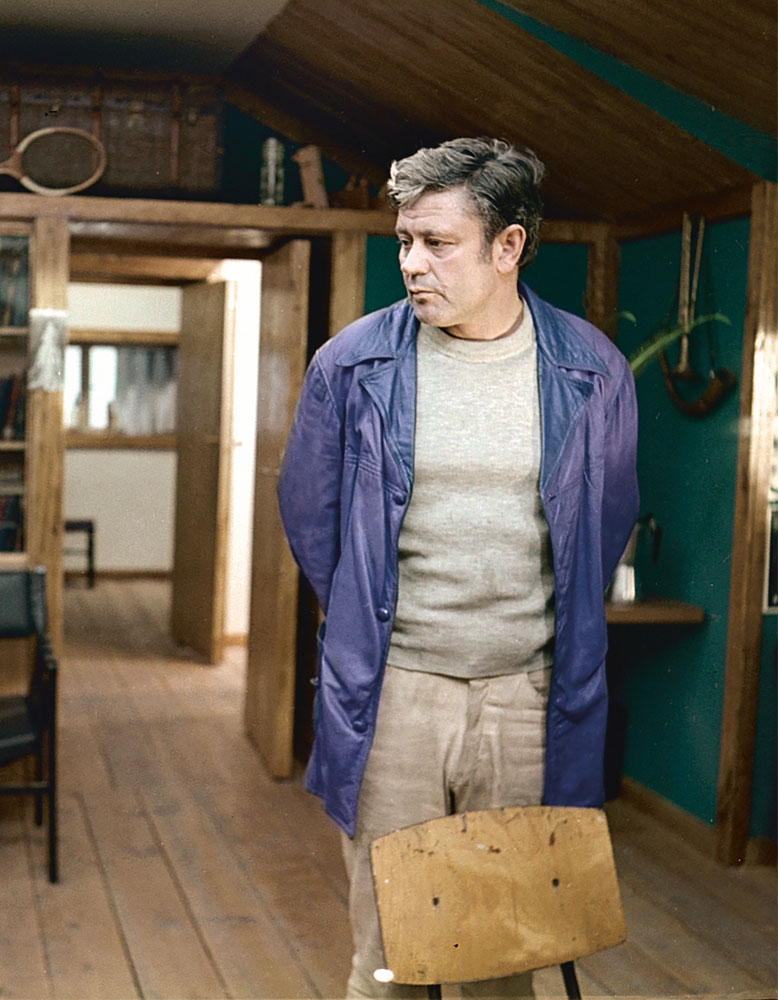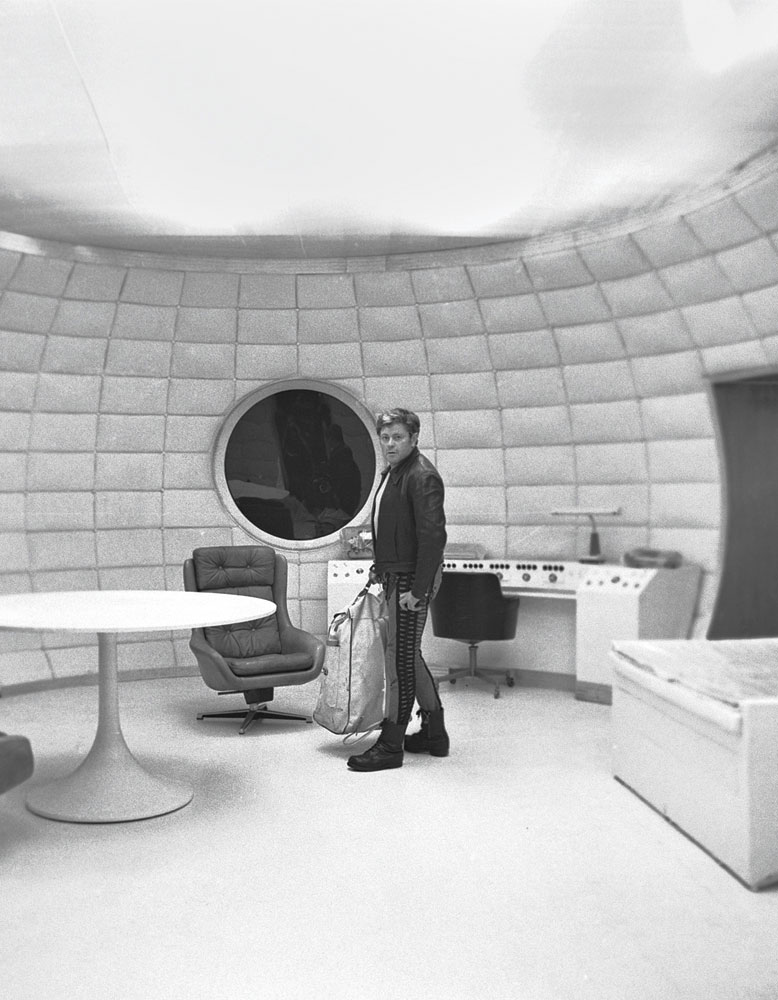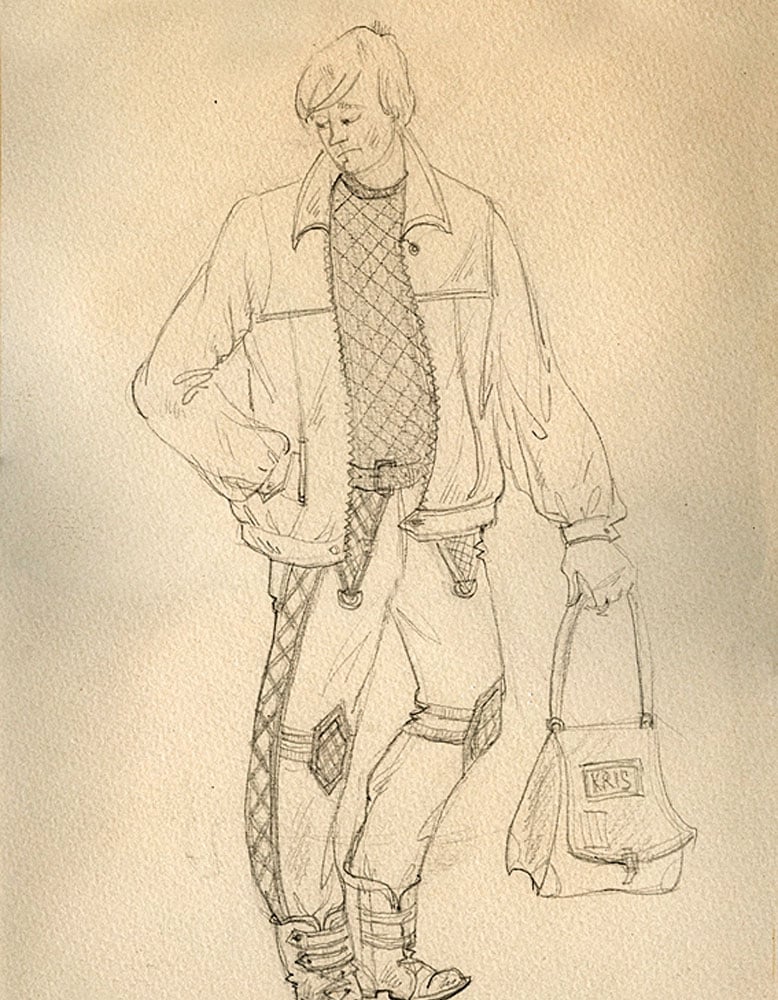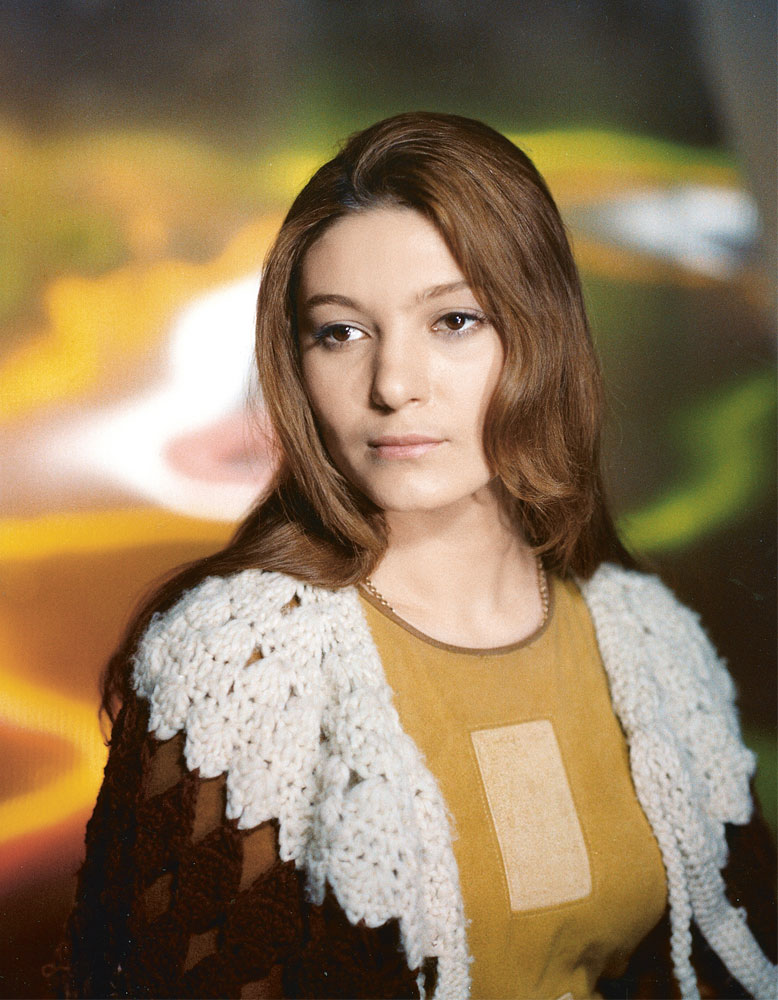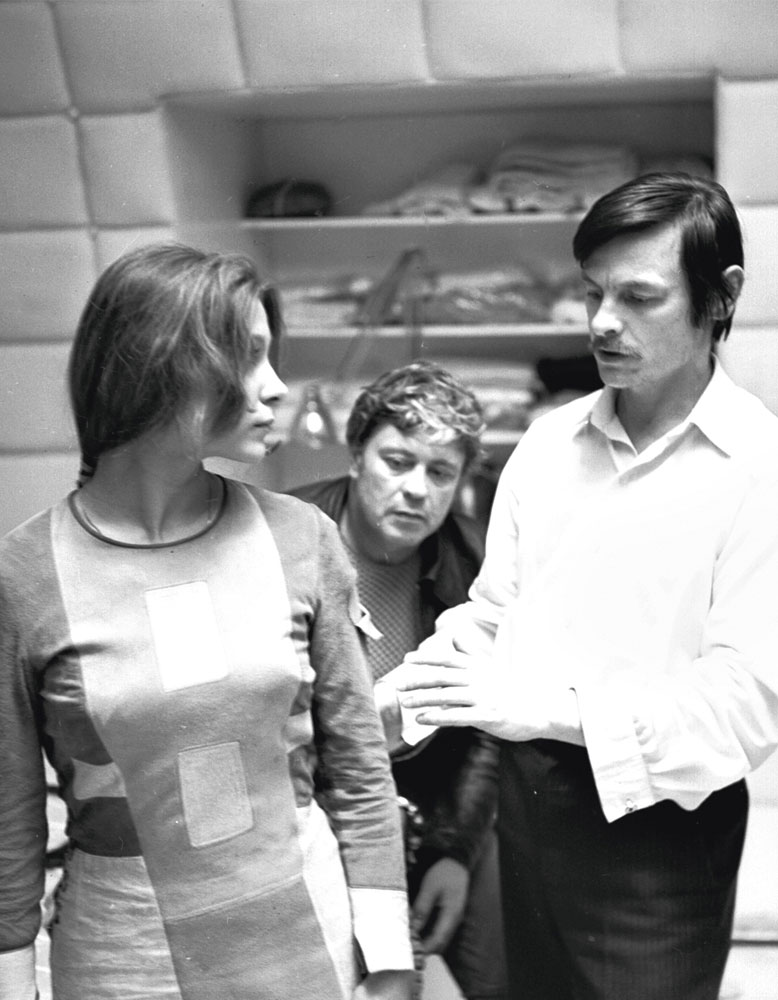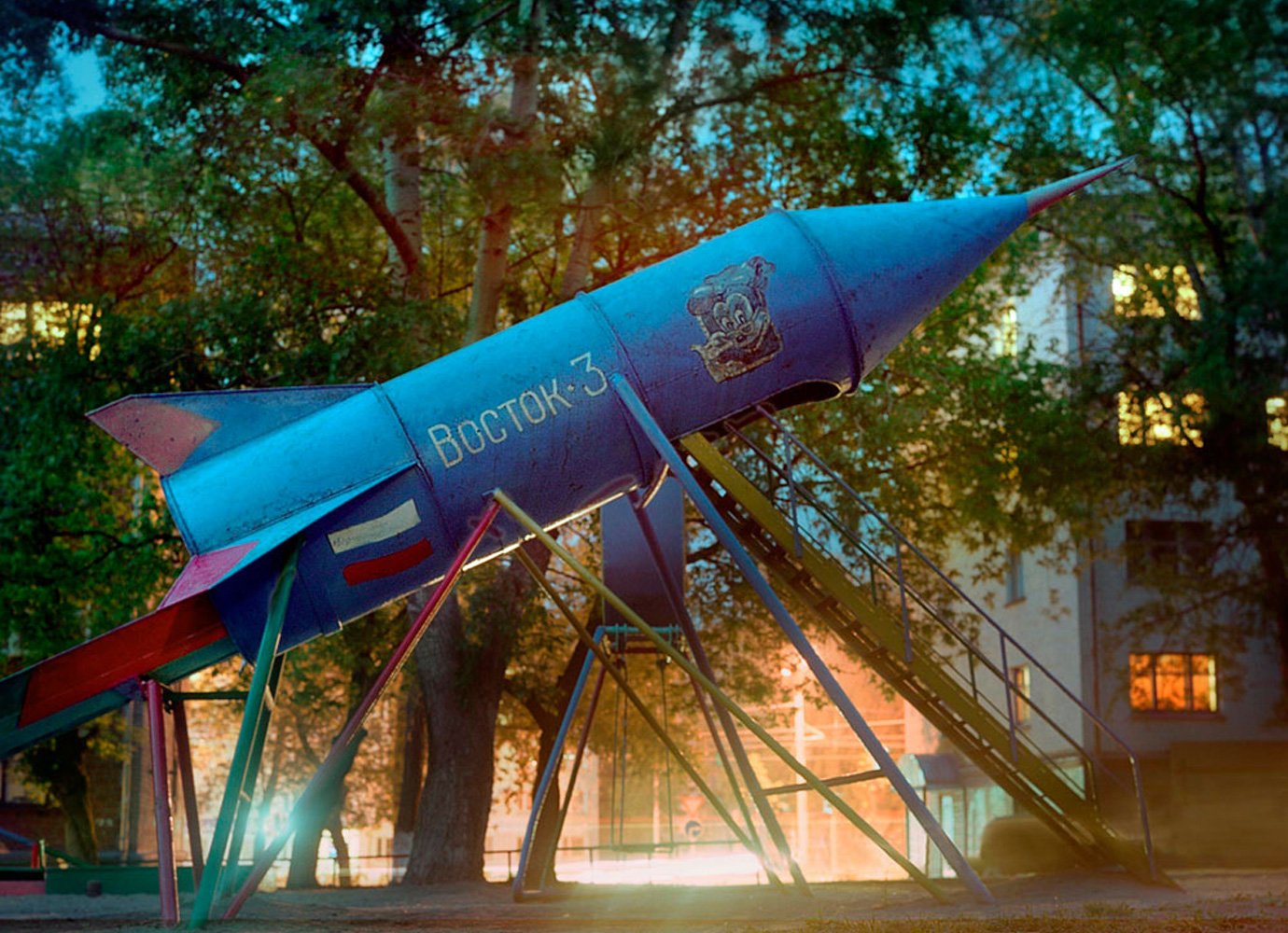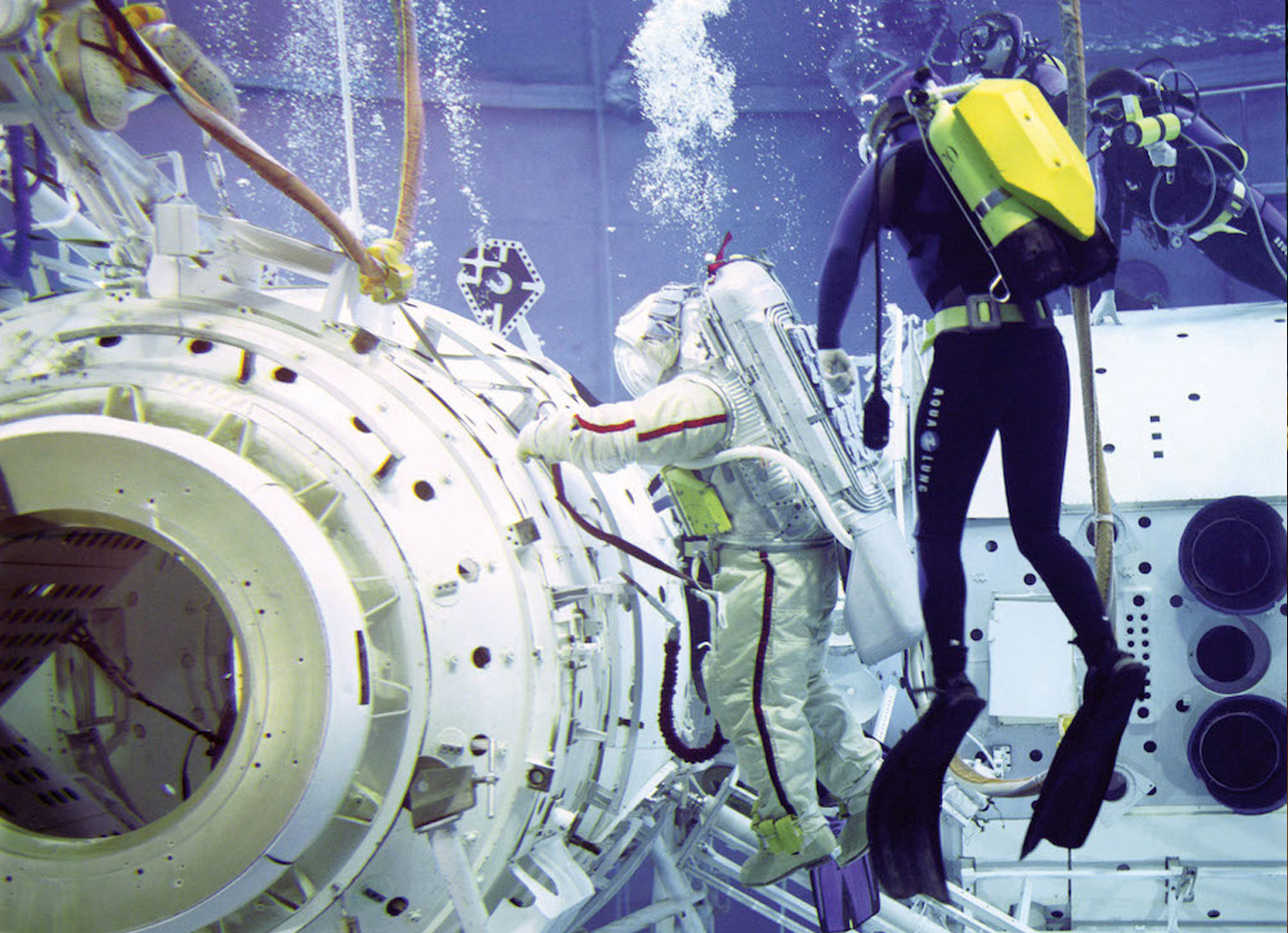Dressing Solaris: notes from the costume designer of the greatest ever Soviet sci-fi movie
Soviet Space DreamsHow do you design costumes for a classic sci-fi film that stand the test of time?
Nelli Fomina was the costume designer on Andrei Tarkovsky’s Solaris as well as Stalker and The Mirror. These are her notes on dressing the cast of a classic science fiction movie.
Originally Tarkovsky had wanted “space age” costumes to be used for Solaris, since the film takes place in the future. Andrei, however, was not satisfied with the plans the first costume designer had come up with: she had used “futuristic designs” from the “House of Models”, which designers saw as pointers to fashions of the future. In Mosfilm’s footwear workshop, square-toed shoes with incredibly high platform soles had been made for the film’s main character, Kris Kelvin. They horrified Andrei.
The director’s diary for September 7, 1970 contains the following brief entry: “There’s nobody I can work with. I’ve got rid of the executive producer and the costume designer as well. Who’s going to replace them? The studio’s got nothing to offer.” Later, on September 21, he noted: “We’ve found a costume designer… N Fomina. Armed with sketches from Mikhail [Romadin], I think she’ll cope.”
I joined the team for Solaris a mere month before shooting began.
I did not have a great deal of contact with Mikhail Romadin, the production designer of Solaris. His visits to the studio were quite rare. The costumes which had been purchased earlier were sent to the Mosfilm warehouse because Tarkovsky had turned them down. A good deal of money had already been spent and the funds allocated for costumes were not increased. We found ourselves with limited time and money at our disposal.
Tarkovsky told me straightaway there was no need to make spacesuits for the film, because “in 30 years’ time people will laugh at us”
Tarkovsky told me straightaway that there was no need to make any spacesuits for the film, because “in 30 years’ time people will laugh at us”. That was a correct decision on his part. In 2011, when I was giving a master-class in Moscow, a young man asked me where we had found the string vest which the hero had worn. It meant that even after all those years the costumes for the film did not seem out of date.
Tarkovsky often used to say that focusing an audience’s attention on colours in costumes is unnecessary and they should not be conspicuous. Admittedly for Solaris, Andrei had not yet set himself the goal of an integrated palette of colours for all the costumes in the film, as would be the case later for The Mirror and Stalker.
The costumes which you see in the films of Solaris, The Mirror and Stalker, are all the fruit of discussions I had with Tarkovsky. He attached great importance to costume design and to their details in establishing the image of each character: for him costumes told the audience a good deal about the character and his or her emotional state.
Andrei used to say: “It’s not simply a matter of dressing an actor — the key thing is that what he’s wearing should correspond to the image of the character.” Through costumes the designer helps to express the nature of a character, to reflect the times and places in which the action unfolds. As the script evolves, so too must the costumes.
When making sketches it is important to take into account the director’s wishes and then embody these in the costumes. I would vary my approach to these sketches for each film, depending upon the script.
In those days the range of available materials was limited, but Andrei always paid close attention to the texture of costumes. Sometimes I had to invent and create the cloth used myself. Tarkovsky liked costumes to be authentic and natural, free from artifice. He was also of the opinion that costumes needed to look as if the characters “felt at home” in them, not as if they were straight from the shop.
Released in 1972, Andrei Tarkovsky’s Solaris is regarded as one of the greatest science-fiction films ever made. The movie is a psychological drama that takes place on a space station orbiting the distant planet of Solaris. On his arrival at the base, Kris Kelvin discovers the station run down and the crew apparently experiencing hallucinations about mysterious “guests”. And then Kelvin meets his wife, who has been dead for ten years.
Kris Kelvin
Kris Kelvin is the main character of the film – a psychologist and astronaut, who sets off for the space station Solaris. He was played by Donatas Banionis. The film starts with a long scene of Kris taking his leave of his father’s house. “Kris Kelvin walked wearily down a slope overgrown with trees. He was wearing a sweater and pale trousers stained with clay.” That is how the first appearance of the hero is described. Later his costume was changed: he appeared in that opening scene in a dark-blue jacket, a light-grey jumper and pale trousers.
In those days, in the USSR, the range of fabrics available was not at all what it is today. For Kris’ pale beige trousers I used some special fine suede of the kind camera-men would use to clean their lenses. I diluted some pale emulsion paint, dipped some muslin into the gluey mixture and stuck the muslin to the back of the suede. When Donatas put them on for the first time, they clung to his legs and, thanks to that, the suede never lost its shape. Andrei was astonished when he learnt how I had made those textured trousers.
Meeting of The Scientific Commission
“The Commission members were sitting round a horse-shoe shaped table under a long row of portraits of scientists from the Solaris project.”
Foreigners and people from the diplomatic corps took part in the shooting of that episode. It was difficult to obtain permission for them to be filmed.
Tarkovsky said that they should be filmed in whatever clothes they turned up in.
The pilot Berton (Vladislav Dvorzhetsky) was in the foreground. So as to single him out from the scientists in civilian clothes, a special uniform was made for him.
Andrei said that his insignia could be selected at random. I picked out fake badges for the sleeves, collar and pocket. I had found them in the military section of the costume workshop. I picked them out at random so that they would not be ones linked with any specific uniform.
Kris on Solaris
After arriving at the space station Kris realises that there is something strange and mysterious going on there. He is not met on arrival and none of the scientists even wants to open the door to Kris.
In the first scenes on the spaceship Kris is wearing his ordinary uniform. Various trimmings from overalls, which we had been given at the space centre, were sewn on to his canvas trousers. The grey colour of the coarse canvas of the trousers went well with the dark-green space-suit trimmings. When he arrives at the space station Kris is wearing a string vest. We had found it in the men’s wardrobe department at the Mosfilm studio: it was an undershirt for divers, which was dyed khaki, as shown in my sketches.
That outfit is not seen again in the film and we are only given a passing glimpse of the space suit in Kris’ room as a reminder of his flight. All the other costumes Kris wears on the space station consist of clothes he could have worn on Earth as well.
Snaut
Snaut, played by Yuri Yarvet, was one of the scientists living on the space station. He is the scientist who comes out with the key statement: “We don’t need other worlds. We need a mirror. We’re struggling to make contact with other civilisations, but we shall never achieve it. We’re in the stupid position of someone aspiring to a goal that he’s afraid of, that he doesn’t need. Human beings only need other human beings.”
The careless air of Snaut’s costume is stressed deliberately. It is noted in the literary version of the script that one of Snaut’s jacket sleeves “was torn and the shoulder of a starched white shirt could be seen underneath it”.
I suggested that the sleeve of his jacket should be torn and stained round the armhole, as mentioned in the script. Tarkovsky insisted, however, that the tears should be on the sleeve. He pointed out exactly where the jacket should be torn — just below the shoulder. It has to be said, the effect achieved was just right: it made it look as if someone had grabbed hold of Snaut and not let go — evidently the stranger or “guest” who hid in his room.
Sartorius
Professor Sartorius was a scientist with strong principles, played by Anatoly Solonitsyn. He regarded the “guests” materialised by the Ocean from the astronauts’ sub-conscious as no more than guinea pigs. For the sake of scientific knowledge he was prepared to carry out all manner of experiments on them.
Through this character Tarkovsky sought to depict an individual totally absorbed by his work, by his mission. We dressed the professor in a stained white coat. The collar of Sartorius’ sweater was deliberately stretched: I pulled at it and then pressed it through a damp cloth.
The scene of Sartorius’ first encounter with Kris is described in the script, as follows: “The door opened a crack and Sartorius squeezed through it into the corridor. He had a haggard face and the lines on his forehead gave him a strained look. His intelligent eyes had an expression of slightly sad arrogance.” While they were talking, “the door opened a little wider and it seemed to Kris that something small looked out from behind it. Sartorius… pushed the small creature back inside.”
Hart
The Ocean brings to life the most painful memories of those living on Solaris, sending “guests” to the space station. In a dream Kelvin is visited by his wife Hari. She committed suicide many years previously, but Kris still experiences a keen sense of guilt towards her. The role of Hari is played by Natalya Bondarchuk.
Excerpt from the script: “Where are your clothes?” he said in a voice not really his own, just for something to say. “Clothes? — Is that dress all you’ve got?”
The sketch for Hari’s dress had been drawn by the film’s production designer, Mikhail Romadin, at Tarkovsky’s request, but there was no pale leather to be had. I had to make do with industrial suede. The colour and texture of Kris’ trousers and those of Hari’s dress are identical and this serves as a link between them.
Andrei approved the dress the actress was to appear in at the same time as her casting. In his diaries he noted: “Natalya Bondarchuk has been confirmed in the role of Hari. At the last fitting for the dress she looked simply splendid.”
